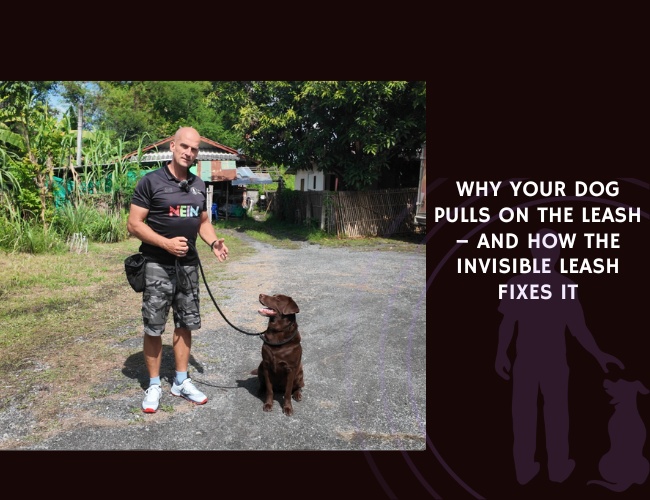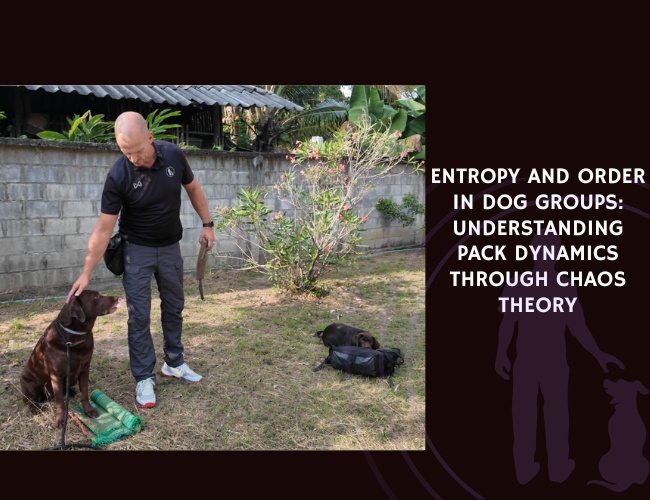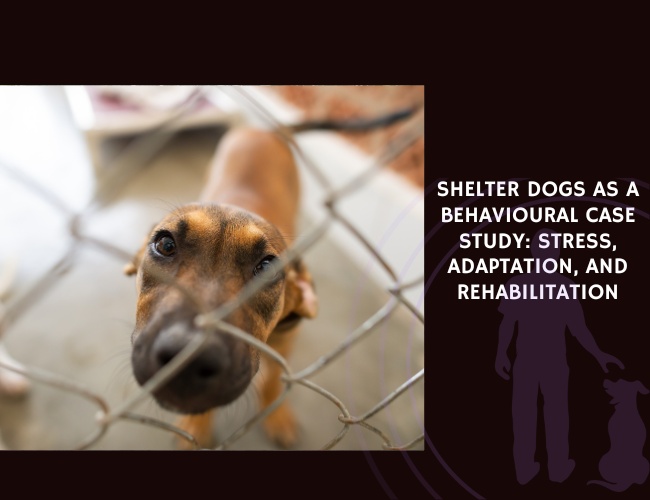Introduction to Dog Behaviorists
Dog behaviorists have a unique role distinct from general dog trainers. While both professionals work with dogs, the primary difference lies in their focus and expertise. Dog behaviorists specialize in understanding and modifying canine behavior, delving into the roots of behavioral issues such as anxiety, aggression, and fear. This approach is different from dog trainers, who generally concentrate on teaching commands and basic obedience.
Distinctions from General Trainers
Dog trainers typically focus on obedience training, teaching dogs to respond to commands like “sit,” “stay,” and “come.” These skills are essential for daily life and ensure that dogs can follow basic instructions from their owners. However, dog behaviorists go beyond these basics. They aim to understand the underlying emotional and psychological reasons for a dog’s behavior. Whether a dog is displaying aggression, experiencing separation anxiety, or reacting fearfully to certain stimuli, behaviorists seek to uncover the root cause and work on modifying that behavior.
Focusing on Underlying Behavioral Issues
Behaviorists use various techniques grounded in behavioral science to address these deeper issues. By focusing on the cause rather than just the symptoms, behaviorists can create long-lasting solutions. For instance, a dog that growls at strangers might be taught to remain calm through desensitization and counter-conditioning. These methods gradually change the dog’s emotional response to the presence of strangers, leading to less aggressive behavior.
Unlike obedience training, which might stop a dog from performing a specific action temporarily, behavior modification aims to change the dog’s overall emotional state. This involves a deeper understanding of canine psychology and behavior patterns, allowing for targeted interventions.
Importance in Modern Canine Welfare
The role of behaviorists in modern canine welfare cannot be overstated. As more dog owners become aware of the psychological and emotional needs of their pets, the demand for qualified behaviorists has grown. Behaviorists help improve the quality of life for dogs and their owners by fostering better communication and understanding between them. They assist in creating a harmonious household where dogs can feel safe, secure, and understood.
Moreover, behaviorists play a crucial role in helping rescue dogs adjust to new environments. Many rescue dogs have experienced trauma, which can lead to behavioral challenges. Behaviorists work to rehabilitate these dogs, addressing issues stemming from past neglect or abuse and helping them integrate into their new homes.
Behaviorists also contribute to shaping public policies related to animal welfare and play an active role in educating dog owners about responsible pet ownership. By advocating for evidence-based, humane practices, and working closely with veterinarians, behaviorists ensure that dogs receive comprehensive care that supports their mental and physical well-being.
By focusing on underlying behavioral issues and employing humane, force-free methods, dog behaviorists are integral to modern canine care. They bridge the gap between canine needs and human expectations, ensuring a better quality of life for both dogs and their owners.
Common Behavioral Issues Addressed
Dog behaviorists are invaluable assets when it comes to tackling various complex behavioral issues that our furry friends may face. Unlike basic obedience trainers, behaviorists dive deep into the psychological and emotional roots of these problems. Here, we explore some of the major issues they address and the contexts in which their expertise is most needed.
Major Behavioral Issues
Aggression
Aggression in dogs can manifest in many ways, such as snapping, growling, or biting. Dog behaviorists work meticulously to identify the triggers of aggressive behavior, whether it be fear, territoriality, or pain. They then implement strategies to reduce aggression, using humane and scientifically backed methods to ensure the safety and well-being of the dog and those around it.
Anxiety
Anxiety is a significant issue for many dogs, showing up in responses to loud noises, separation from their owners, or unfamiliar environments. Behaviorists employ techniques designed to build a dog’s confidence and lessen their fear responses. Methods such as desensitization and counter-conditioning are particularly effective, gradually exposing dogs to anxiety-inducing stimuli while providing positive reinforcement.
Separation-Related Distress
Separation anxiety is prevalent among dogs who struggle with being left alone. This distress can lead to destructive behaviors, excessive barking, or attempts to escape. Behaviorists help these dogs cope with loneliness by creating individualized treatment plans that often include structured absences and positive associations with solitude.
Specific Contexts Requiring Behaviorists
Post-Rescue Situations
Rescue dogs frequently carry the weight of trauma from past experiences, making them prime candidates for behavioral intervention. Behaviorists are essential in these scenarios as they can address the deep-rooted emotional scars and help these dogs adjust to their new homes, ensuring a smooth transition and fostering a sense of security.
Trauma Recovery
Dogs that have experienced abuse or severe neglect may exhibit a range of distressing behaviors. A behaviorist’s role here is to help them regain trust and manage fear. Through patience and consistent training, behaviorists can slowly reintegrate these dogs into a caring and loving environment.
Multi-Dog Households
Managing dynamics in homes with multiple dogs can be challenging. Conflicts can arise over resources like food, toys, and the attentions of their human families. Behaviorists can devise strategies to promote harmony and address specific issues such as resource guarding, teaching dogs to coexist peacefully.
Importance of Root Cause Analysis
One of the critical advantages of working with a behaviorist is their commitment to understanding the function behind a dog’s behavior rather than merely addressing the symptoms. By identifying the underlying causes—whether it’s fear, anxiety, or miscommunication—behaviorists can create more effective and sustainable behavior modification plans.
Behaviorists strive to treat the root of the problem, ensuring that interventions are tailored to the individual needs of each dog. This method ensures long-term success and significantly improves the quality of life for both the dog and its owner.
By understanding and addressing these complex issues, dog behaviorists play an essential role in promoting overall canine welfare. Through their work, they bridge the gap between human expectations and canine needs, creating harmonious and lasting relationships.

Professional Qualifications and Ethics
Dog behaviorists are essential in ensuring the well-being and proper management of dogs with behavioral issues. Their role extends beyond the surface-level commands and obedience training, diving deep into the psychology and emotions driving a dog’s behavior. This chapter explores the necessary qualifications, certifications, and ethical commitments that set professional dog behaviorists apart.
Recognized Certifications
Several prestigious organizations offer certifications for dog behaviorists, each with rigorous standards to ensure competency and adherence to humane practices. These certifications validate the expertise and dedication of professionals in the field:
- Certified Applied Animal Behaviorist (CAAB): Offered by the Animal Behavior Society, this certification is for individuals with advanced degrees in animal behavior or related fields, demonstrating a thorough understanding of behavioral science.
- Diplomate of the American College of Veterinary Behaviorists (DACVB): This credential is designated for veterinarians who have completed specialized training in animal behavior. DACVBs are uniquely qualified to address both medical and behavioral issues in animals.
- International Association of Animal Behavior Consultants (IAABC): IAABC offers various levels of certification for behavior consultants working with a range of animals, including dogs. The certification process includes an assessment of education, experience, and adherence to ethical standards.
- Certified Clinical Animal Behaviorist (CCAB): This certification, popular in the UK, is granted by organizations such as the Association for the Study of Animal Behaviour (ASAB). It requires a significant level of academic achievement and practical experience.
Commitment to Force-Free, Humane Methods
Ethical considerations are paramount for professional dog behaviorists. They prioritize force-free and humane methods that promote positive reinforcement, ensuring the well-being and trust of the dogs they work with. These methods stand in stark contrast to aversive techniques, which can cause harm and fear in dogs.
- Humane Techniques: Ethical behaviorists avoid the use of punishment or aversive tools like shock collars and prong collars. Instead, they employ strategies that build trust and encourage desired behaviors through positive experiences.
- Client Education and Informed Consent: It is crucial for behaviorists to educate dog owners about the methods and techniques used. Informed consent ensures that clients understand the process and potential outcomes, fostering transparency and collaboration.
Veterinary Collaboration and Ethical Considerations
Collaboration with veterinary professionals is a cornerstone of ethical behavior modification. Medical issues can often mimic or contribute to behavioral problems, making it necessary for behaviorists to work closely with veterinarians to rule out or address any underlying health concerns.
- Multidisciplinary Approach: Working in tandem with veterinarians, nutritionists, and even physical therapists can enhance the effectiveness of behavioral interventions. This holistic approach ensures comprehensive care for the dog’s overall well-being.
- Ethical Implications: Behaviorists must adhere to high ethical standards, ensuring that their interventions are in the best interest of the dog. They are responsible for implementing humane treatment plans and upholding the dignity of the animals they serve.
As we continue our exploration of dog behaviorists, the next chapter will delve into the scientific approaches they use to modify behavior, ensuring that every intervention is based on solid evidence and proven techniques.
Scientific Approaches to Behavior Modification
Key Techniques: Classical and Operant Conditioning
When addressing canine behavioral issues, dog behaviorists often rely on scientifically-backed techniques such as classical conditioning and operant conditioning. These methods focus not just on altering behavior but also on understanding the motivations behind it.
Classical Conditioning
This technique is all about creating associations. Imagine a dog that barks and becomes anxious whenever the doorbell rings. Through classical conditioning, behaviorists can change the dog’s emotional response to the doorbell. They might pair the sound of the doorbell with something positive, like a treat. Over time, the dog begins to associate the doorbell with a reward instead of feeling stressed.
Operant Conditioning
Operant conditioning involves reinforcing behaviors to encourage or discourage them. For instance, if a dog sits when asked and receives a treat, it’s more likely to sit again in the future. If jumping on visitors leads to being ignored, the dog will learn that jumping isn’t beneficial. Behaviorists utilize positive reinforcement (adding something pleasant) and negative reinforcement (removing something unpleasant) to shape desired behaviors. They avoid punishments as they can cause fear and aggression.
Desensitization and Counter-Conditioning
Desensitization and counter-conditioning are vital in helping dogs cope with stimuli that cause anxiety or fear.
Desensitization
This method involves gradually introducing the dog to the anxiety-provoking stimulus in a controlled and incremental way. If a dog is afraid of other dogs, they might be exposed to another dog at a distance where they feel comfortable. Over time, the distance is slowly decreased as the dog’s anxiety lessens, allowing them to adapt without becoming overwhelmed.
Counter-Conditioning
Counter-conditioning builds on desensitization by changing the dog’s emotional response. If a dog has a negative reaction to vacuum cleaners, behaviorists might pair the sound of the vacuum with a treat, thereby shifting the dog’s response from fear to positive anticipation. This dual approach can be transformative for dogs struggling with anxiety triggers.
Importance of Evidence-Based Practices
Using evidence-based practices is crucial for effective behavior modification. Evidence-based methods draw from extensive research and have been proven to work through rigorous scientific studies. This means that behaviorists employ techniques that are safe, humane, and have a track record of success.
These practices are tailored to address the root causes of the dog’s behavior. By focusing on the underlying reasons rather than just symptoms, behaviorists can implement long-term solutions. For example, a dog’s aggression may stem from fear, so the solution would target the fear rather than just the aggressive outbursts.
Behaviorists also integrate environmental management and enrichment into their approaches. Changes to a dog’s environment, like providing more mental stimulation or ensuring a predictable routine, can help alleviate behaviors like destructiveness or excessive barking. They also teach owners effective communication strategies, further bolstering the dog’s behavioral progress.
To summarize, scientific approaches to behavior modification are essential for helping dogs overcome challenging behaviors. Techniques like classical and operant conditioning, combined with desensitization and counter-conditioning, provide comprehensive strategies for addressing and resolving these issues. These methods not only enhance the well-being of dogs but also strengthen the bond between dogs and their owners. By grounding their methods in science, dog behaviorists ensure that their interventions are both effective and humane.
Working with Dog Owners
Successful behavior modification in dogs is heavily reliant on the education and involvement of their owners. Understandably, dogs and their owners form strong bonds, and effective communication between the two can significantly influence behavior change. However, without proper knowledge and training, owners might unintentionally reinforce negative behaviors. Here, we’ll explore why owner education is crucial, the significance of the human-dog relationship and co-regulation, and strategies for long-term behavioral success.

The Crucial Role of Owner Education
Dog behaviorists play an indispensable role in educating dog owners about canine behavior. Owners must understand their dog’s needs and nuances to provide the appropriate responses. Behaviorists offer detailed insights into why certain behaviors occur, allowing owners to recognize and address these issues meaningfully. For instance, a dog that barks excessively may not just be noisy but could be reacting to anxiety or environmental stressors. By learning these intricacies, owners can implement strategies better suited to their dog’s specific needs.
Education extends beyond just the immediate behaviors. Owners must learn about:
- Positive reinforcement techniques to encourage desired behaviors.
- Identifying triggers that might lead to negative reactions such as aggression or anxiety.
- Consistency in applying learned techniques to avoid confusion for the dog.
When owners are well-informed, the likelihood of successfully modifying a dog’s behavior increases significantly.
The Importance of the Human-Dog Relationship and Co-Regulation
The relationship between a dog and its owner is vital for successful behavior modification. Dogs look to their owners for cues on how to react. If an owner is calm and consistent, it helps the dog feel secure and understood. This dynamic, where the emotions and behaviors of the dog and owner influence each other, is known as co-regulation.
Behaviorists help owners understand how their own behavior and emotional state can affect their dog. For instance, an owner’s anxiety can be mirrored by their dog, escalating the dog’s stress levels. By teaching owners to manage their emotions, behaviorists create a more harmonious environment where the dog’s behavior can be positively influenced.
Effective co-regulation includes:
- Remaining calm and composed during stressful situations.
- Consistent positive reinforcement that helps the dog feel secure.
- Understanding non-verbal cues and responding thoughtfully.
Strategies for Maintaining Long-Term Behavioral Changes
Long-term behavioral change in dogs is not just about immediate fixes but about sustainable practices. Behaviorists emphasize strategies that owners can incorporate into their daily routines to ensure persistent positive outcomes. Here are key strategies to consider:
- Consistency: Owners must consistently apply the techniques learned from behaviorists. Inconsistencies can confuse the dog and set back progress.
- Positive Reinforcement: Continuously rewarding good behavior helps to reinforce what is expected from the dog. Rewards can include treats, praise, or playtime.
- Environmental Management: Modifying the dog’s environment to reduce stressors and triggers can significantly improve behavior. This might involve creating a safe space for the dog or managing interactions with other pets and people.
- Mental and Physical Enrichment: Providing activities that stimulate the dog’s mind and body can reduce unwanted behaviors resulting from boredom or excess energy. This can include puzzles, training sessions, or regular exercise.
- Ongoing Education: Behaviorists often suggest that owners keep learning about canine behavior. This ongoing education can come from follow-up sessions, workshops, or credible online resources.
Behaviorists also emphasize the importance of monitoring progress through specific metrics such as the frequency of unwanted behaviors, the dog’s stress levels, and overall satisfaction of the owner. This monitoring can help in adjusting strategies to better suit the dog’s evolving needs.
By investing time and effort into understanding and nurturing the human-dog relationship, and consistently applying effective behavior modification techniques, owners can achieve lasting positive changes in their dog’s behavior. This approach not only improves the dog’s quality of life but also enhances the bond between dog and owner, leading to a more harmonious coexistence.
Through these well-rounded methods, behaviorists enable dogs and their owners to thrive together, fostering environments where positive behaviors are naturally reinforced and undesirable ones are effectively addressed.
Future of Canine Behaviorism
Emerging Trends in Canine Psychology and Behavioral Science
The field of canine behaviorism is evolving rapidly, driven by new discoveries in psychology and neuroethology. Understanding dogs as social learners, rather than adopting outdated dominance theories, is shaping modern approaches. This shift promotes more effective, humane methods that emphasize empathy and science over aggression and submission. Techniques like classical and operant conditioning are being refined, along with innovative approaches such as environmental enrichment and mental stimulation. These advancements enhance our ability to address complex behaviors and improve dog welfare significantly.
Growing Demand for Qualified Behaviorists
As society becomes more attuned to animal welfare, the demand for skilled, qualified behaviorists is increasing. More dog owners recognize that behavioral issues stem from deeper emotional and psychological problems rather than mere disobedience. This awareness is pushing the need for evidence-based, welfare-first professionals. Behaviorists are becoming essential not just in private practices but also in shaping public policies, enhancing shelter operations, and educating the general public on responsible pet ownership.
This rising demand also highlights the importance of certified behaviorists, such as those accredited by organizations like the CAAB (Certified Animal Behaviorist), DACVB (Diplomate of the American College of Veterinary Behaviorists), IAABC (International Association of Animal Behavior Consultants), and CCAB (Certified Companion Animal Behavior Consultant). These certifications ensure that behaviorists are well-versed in the latest scientific methods and ethical practices, providing the highest standard of care.

Impact of Research on Evidence-Based Practices
Research is the cornerstone of advancements in canine behaviorism. The field relies heavily on evidence-based practices that are continuously informed by new studies and findings. Techniques such as desensitization and counter-conditioning are meticulously validated through research. For example, exposing dogs gradually to anxiety-inducing stimuli while associating these with positive experiences can effectively change their emotional response over time.
Moreover, understanding the underlying functions of behaviors, rather than just addressing symptoms, allows for more tailored and effective intervention plans. Behaviorists analyze each dog’s unique situation and implement strategies that target the root causes. By integrating environmental management, providing enrichment activities, and enhancing communication between dogs and their owners, behaviorists play a vital role in improving both immediate and long-term behavioral outcomes.
In conclusion, the future of canine behaviorism is poised for significant growth and advancement. With increasing emphasis on humane, evidence-based practices and extensive research driving innovation, the field is well-equipped to meet the growing needs of dogs and their owners.










